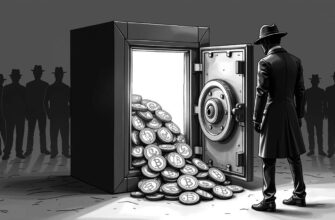Cryptocurrencies have proliferated rapidly ever since the inception of Bitcoin and blockchain technology. Yet a mere decade later, cryptocurrencies have become kinda old news. A whole new digital asset class is developing which arguably represents the most significant investment opportunity since the Internet.
Understanding this emerging asset class is critical for the development of new businesses, smarter investment strategies and the diversification of traditional portfolios.
What is a digital asset?
Digital assets all contain the same fundamentals, such as the use of cryptography, P2P networking, and public/private distributed ledgers, e.g. (a blockchain). According to the International Monetary Fund, digital assets:
“are digital representations of value, made possible by advances in cryptography and distributed ledger technology. They are denominated in their own units of account and can be transferred peer to peer without an intermediary.”
What types of digital assets exist?
Cryptocurrencies
The most talked about crypto asset in the market today. A cryptocurrency is a form of digital currency that uses cryptographic principles (aka computer code to secure information). Cryptocurrencies have three main purposes – means of exchange, store of value and unit of account. The most popular cryptocurrency today is Bitcoin, an open-source P2P payment system that allows transactions to get sent via a decentralized platform, without a financial intermediary. A cryptocurrency’s primary use is to provide a means of exchange between two parties with a unit of account. Bitcoin, besides its use of speculative value, allows two or more parties to send transactions to each other without an intermediary.
Stablecoins such as Tether and MakerDAI also fall into this category. In general terms, a stablecoin is a type of cryptocurrency that has stable price characteristics. Most stablecoins are pegged against the US dollar, and they help investors retain their trading profits without the need to withdraw into FIAT currency and hedge against market volatility.
Crypto commodities
A crypto commodity uses fundamental cryptographic principles within a platform to allow for the creation of new, independent digital assets that can represent an entirely unique set of values. A helpful analogy is Gold. Gold as a commodity, and a gold necklace as a refined version of the commodity with different values.
The largest crypto commodity in the market today is Ethereum, an open-source distributed computing platform, and operating system. Unlike Bitcoin, Ethereum enables the ability to develop uncensored, decentralized applications known as dApps. Decentralized applications under the Ethereum network utilize smart contracts that can be used to differentiate from another, in the form of ERC-20 tokens. Although it could be argued that Ether, the payment system that allows Ethereum’s machines to execute requested operations, could be valued as a medium of exchange, the primary functionality of it is to provide a fungible, economic good or service.
Ethereum and SIA represent crypto commodities – a more tangible form of crypto asset that allows its blockchain platform to create value and establish new units of value.
Utility tokens
Utility tokens, also known as user tokens or appcoins, provide future or current access to a company’s products and services. These are programmable blockchain assets that have utility in an application, they are not designed as investments. Utility tokens are like digital coupons that can be used for a service that is already live, or that is in the process of being developed.
Security tokens
Security tokens primarily derive their value from an external source, usually a tradable asset. They are essentially digital, liquid contracts for fractions of any asset that already has value, like a house, a car, a painting, or equity in a company, according to Investopedia. Security tokens are subject to federal securities regulations.
Security Token Offerings (STOs), widely regarded as the next phase of the crowdfunding revolution are similar to Initial Coin Offerings (ICO) for utility tokens. The advantages of tokenization include things like increased liquidity, lower issuance fees and the fractionalization of larger assets. Tokenization also provides issuers with access to a global pool of capital.
Hybrid tokens
Are tokens that do not necessarily carry the traditional features of a security but may be valued for both practical uses on a platform and investment purposes. Hybrid tokens provide benefits for two different types of holders: participants who want to access the right to a specific product or service, and investors who hold for speculative value.
Real-world asset tokens
Real-world asset tokens are a digital representation of a tangible real-world asset. Take gold-based tokens for example. The idea is best summed up by Jim Manning – “The token and the particular amount of gold it represents are one and the same. So while it’s not entirely incorrect to think about the token as a unit of value that derives its worth from the price of gold, it’s even more specific, as the token represents a particular piece of gold you own. The token acts like your record of ownership of an asset, effectively becoming the digital shadow that a real piece of gold casts into the virtual world.”
Why are digital assets important?
Digital assets are tipped to be a trillion-dollar opportunity for companies and investors for one simple reason. The high-speed digital economy necessitates new ways of doing business and creating wealth. Digital assets, whether you’re talking about cryptocurrencies, crypto commodities, utilities, security tokens or real-world asset tokens provide a way to digitally redesign the global economy and develop new business models, creating more efficiency and unprecedented access to new opportunities.
Overall, digital assets have the ability to transform every industry in the economy, from financial services, insurance, and healthcare to energy distribution, real estate, and manufacturing.
5 Risks You Need to Know About Before Investing in Cryptocurrencies
Did you enjoy the article? Please take a quick moment to share it with your network. Also, if you have any questions or would like to connect you can find me on Twitter or email me at [email protected] I’m always interested in meeting people working, learning, or involved with the blockchain space.
Anthony is the head of content and research at Intrepid Ventures. He has spent the past several years researching and analyzing technologies and working with a diverse mix of blockchain companies to help them gain insight and develop authoritative content.
Also published on Medium.







